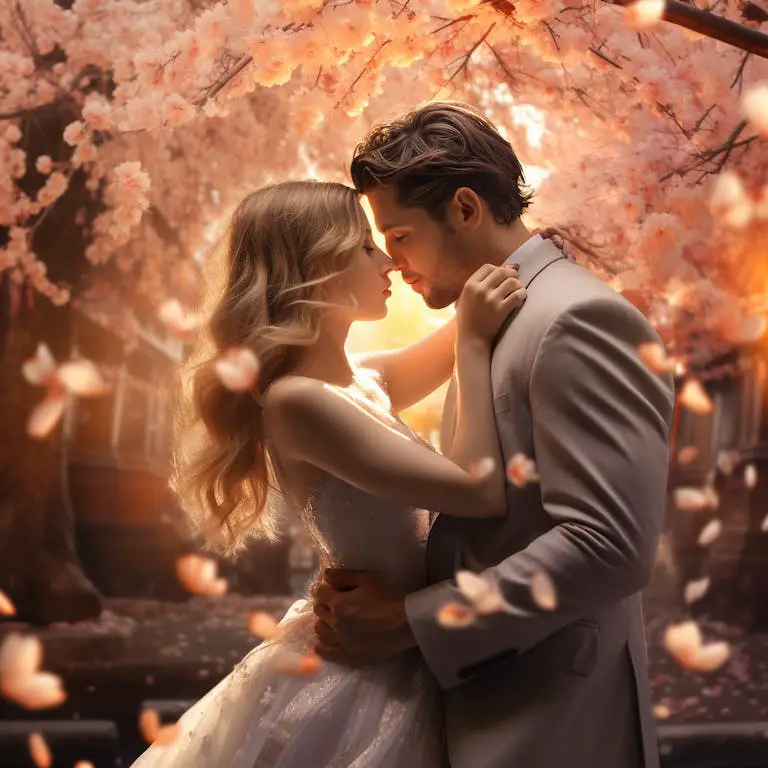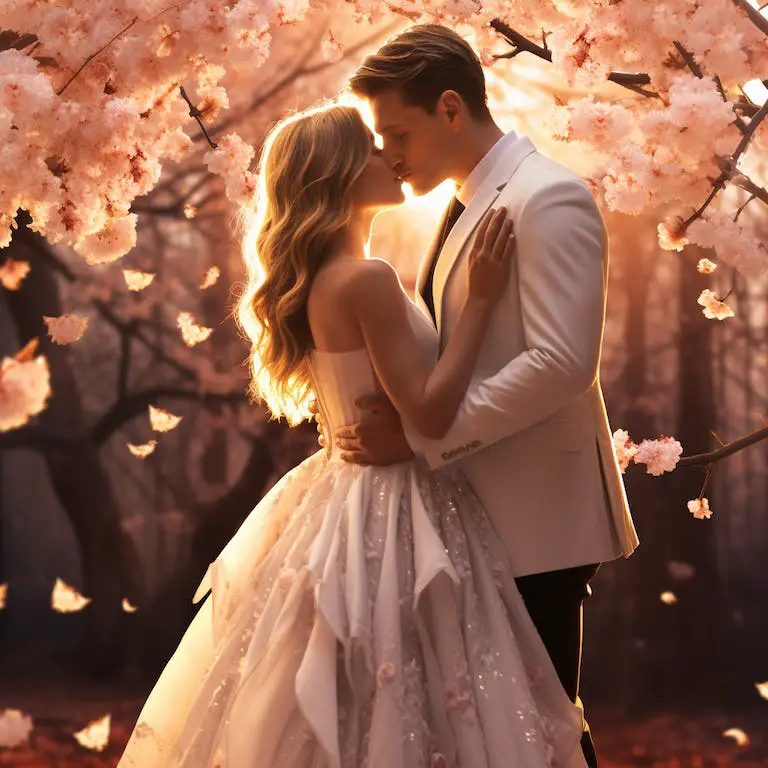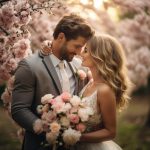If you’ve ever been enchanted by the magic captured in wedding photos and dreamt of being the one behind the lens, you’re in for a treat.
Welcome to our guide on how to become a second shooter for wedding photography, where we’ll break down the steps in a language that’s as clear as a crystal-clear snapshot. Wedding photography is a beautiful dance between skill, creativity, and capturing unforgettable moments.
As a second shooter, you get to be part of this dance, assisting the main photographer in crafting visual narratives that will be cherished for a lifetime.
Whether you’re a photography enthusiast looking to turn your passion into a profession or someone eager to gain hands-on experience, this guide is your roadmap to stepping into the world of wedding photography.
We’ll navigate through the basics, from understanding the role of a second shooter to building a killer portfolio that speaks louder than words.
So, grab your camera, bring along your enthusiasm, and let’s dive into the wonderful journey of becoming a second shooter in the captivating realm of wedding photography!
Contents
- 1 Understand the Role of a Second Shooter
- 2 Build a Wedding Photography Portfolio
- 3 Market Yourself as a Professional
- 4 Develop Your Skills as a Second Shooter
- 5 Network with Other Wedding Photographers
- 6 Learn How to Work with a Lead Photographer
- 7 Conclusion:
- 8 FAQs
- 8.1 What is a second shooter in wedding photography?
- 8.2 How do I get started as a second shooter?
- 8.3 Do I need professional gear to become a second shooter?
- 8.4 How can I find opportunities to second shoot for weddings?
- 8.5 What skills are crucial for a second shooter?
- 8.6 Is formal education necessary to become a second shooter?
Understand the Role of a Second Shooter
As a second shooter, you are an important part of a wedding photography team. The primary shooter is the one who is responsible for capturing the main shots of the day, while the second shooter works alongside them to capture additional angles and moments. It’s important to understand the role of the second shooter so that you can contribute to the team and capture beautiful photos.
As a second shooter, you should be aware of the overall vision for the wedding day and know what the primary shooter is looking to capture. You can then provide complementary shots that round out the collection.
For example, if the primary shooter is focused on capturing the bride getting ready, you could be capturing the groom and his groomsmen getting ready.
In addition to complementary shots, the second shooter can also be responsible for getting detail shots. These are close-ups of the dress, rings, flowers, invitations, etc. that provide important context for the wedding day. It’s important to get a variety of detail shots so that the primary shooter can focus on the main event.
Another important role of the second shooter is to capture candid moments. These are the in-between moments that often go unnoticed but help tell the story of the day. While the primary shooter is focused on posed shots, the second shooter can be moving around to capture guests laughing, crying, hugging, etc.
It’s important to be aware of your surroundings and always be ready to shoot. This means having your camera out and being prepared to capture moments as they happen. When working with the primary shooter, it’s important to be respectful of their space and refrain from getting in their shot.
As a second shooter, you are an important member of the team who helps capture a complete story of the wedding day. Understanding your role and being prepared to shoot will help you take beautiful photos that the couple will cherish for a lifetime.

Build a Wedding Photography Portfolio
As a photographer, your portfolio is your most important marketing tool. It is there to not only show your prospective clients your work, but also to demonstrate your style, approach and professionalism.
Building a strong wedding photography portfolio takes time, dedication and a little bit of know-how. Here are our top tips on how to build a wedding photography portfolio that will help you attract clients and get booked for jobs.
One of the best ways to get started in wedding photography is to second shoot for another photographer. This allows you to get a feel for weddings, learn how to shoot in a variety of settings and gather a body of work to show potential clients. Many photographers are happy to take on a second shooter, so it is definitely worth reaching out and asking around.
Of course, you can also build up your portfolio by shooting your own weddings. This can be a great option if you have friends or family who are getting married and are happy for you to document their big day. It can be a lot of work to shoot a wedding solo, so make sure you are prepared before taking on such a job.
When shooting weddings, it is important to capture a mix of candid, natural moments as well as more posed, traditional shots. Showcasing a range of styles in your portfolio will help you appeal to a wider range of clients.
When putting your portfolio together, be sure to only include your very best work. It is better to have a small selection of amazing images than a large number of mediocre ones. Take the time to edit your photos carefully and only include shots that you are truly proud of.
Your wedding photography portfolio should be an ever-evolving document of your best work. As you shoot more weddings and develop your style, be sure to update your portfolio accordingly. This will help you ensure that it always accurately reflects your current work and skills.
Building a strong wedding photography portfolio takes time and effort, but it is definitely worth it. By following these tips, you can create a portfolio that will help you attract clients and get booked for jobs.

Market Yourself as a Professional
As a professional photographer, marketing yourself effectively is crucial to your success. There are a number of ways to market yourself as a photographer, and the key is to find the method or combination of methods that work best for you.
One of the most important things you can do to market yourself as a photographer is to have a strong portfolio. Your portfolio should showcase your best work and highlight your unique style. It should be easy for potential clients to see what you’re capable of, and how you can help them capture the memories they want.
Another great way to market yourself as a photographer is to get involved in the local photography community. There are often meetups or groups you can join, and getting involved can help you meet other photographers and potential clients. It can also be a great way to stay up-to-date on the latest trends and techniques.
Still, another way to market yourself as a photographer is to offer your services for free or at a discount to build up your portfolio. This can be a great way to attract potential clients who may not be familiar with your work. Just be sure to set clear expectations upfront so there are no surprises later on.
And last but not least, don’t forget the power of word-of-mouth marketing. If you do a great job for a client, they’re likely to tell their friends, family, and colleagues about you. And those recommendations can go a long way in helping you attract new business.
So there you have it – a few ways to market yourself as a professional photographer. The key is to find the methods that work best for you and then put in the effort to make them successful. With a little hard work and dedication, you can build a thriving photography business.

Develop Your Skills as a Second Shooter
As a second shooter, you have the opportunity to assist the primary photographer and gain valuable experience in the wedding photography industry. By developing your skills as a second shooter, you can build your portfolio, expand your network, and learn from the best in the business. Here are a few tips to help you develop your skills as a second shooter:
1. Be prepared: Make sure you know the schedule for the day and understand the expectations of the primary photographer. Show up early and be ready to shoot.
2. Follow the primary photographer’s lead: Pay attention to how they interact with the couple and guests, and emulate their style.
3. Stay out of the way: Don’t get in the primary photographer’s way or block their shots.
4. Be invisible: Many guests won’t even know there’s a second shooter, so blend in and be unobtrusive.
5. Be proactive: Anticipate the needs of the primary photographer and be ready to step in when needed.
6. Be patient: Some couples take a while to warm up to the camera, so be patient and wait for those moments of connection.
7. Be decisive: When it comes to editing, trust your gut and make quick decisions.
8. Be flexible: Things don’t always go according to plan, so be prepared to improvise and go with the flow.
9. Be edit-minded: When you’re shooting, always think about how the images will look when they’re edited.
10. Have fun! Shooting weddings can be demanding, but remember to enjoy the process and document the joy of the day.
Network with Other Wedding Photographers
As a wedding photographer, it’s important to network with other photographers in the industry. There are a few reasons for this:
1. You can learn from each other. No matter how experienced you are, there’s always room to learn from others. When you network with other photographers, you can pick up new techniques and learn about different styles.
2. You can collaborate with each other. Collaborating with other photographers is a great way to create unique content for your portfolio. It also helps you reach a wider audience, as you can promote each other’s work to your respective followers.
3. You can support each other. The wedding photography industry can be tough, and it’s important to have a supportive community to fall back on. When you network with other photographers, you can create lasting relationships that will help you both professionally and personally.
Here are a few tips on how to network with other wedding photographers:
1. Reach out to photographers whose work you admire. The best way to start networking is to reach out to photographers whose work you admire. Send them an email orDM them on Instagram and let them know that you’re a fan of their work. This is a great way to start a conversation and get to know someone.
2. Attend industry events. There are many industry events that are great for networking, such as wedding photography workshops and conferences. Attending these events is a great way to meet other photographers and learn more about the industry.
3. Get involved in online communities. There are many active online communities for wedding photographers, such as Facebook groups and forums. These communities are great for networking, as you can connect with photographers from all over the world.
4. Offer to second shoot. One of the best ways to network with other photographers is to offer to second shoot for them. This is a great way to learn from experienced photographers and build your portfolio at the same time.
5. Start your own meetup group. If you can’t find any existing networking opportunities that fit your needs, why not start your own? You can create your own meetup group or online community for wedding photographers in your area. This is a great way to connect with other photographers and create opportunities to collaborate.

Learn How to Work with a Lead Photographer
When you are starting out as a wedding photographer, one of the best things you can do is to second shoot with a lead photographer. This will give you the opportunity to learn how they work and how to best support them on a wedding day. Here are some tips on how to be a great second shooter:
1. Be Prepared
Before the wedding day, take some time to familiarize yourself with the lead photographer’s style and workflow. This will help you know what to expect on the day of the wedding and how you can best support the lead photographer.
2. Arrive Early
On the day of the wedding, make sure to arrive early so that you can help the lead photographer with any last-minute setup. This will also give you a chance to get to know the layout of the venue and find the best spots for taking photos.
3. Be Attentive
During the wedding, pay attention to the lead photographer and be ready to lend a hand when needed. For example, if they are taking a group photo, offer to help herd the guests into place.
4. Be Flexible
The lead photographer may need your help with things that are not related to taking photos. For example, they may need you to hold their bag or fetch them a drink of water. Be flexible and willing to help out in any way you can.
5. Capture Candid Moments
While the lead photographer is focusing on the posed shots, be sure to capture the candid moments as well. Look for moments of joy, laughter, and emotion and snap away. These candid shots will often be some of the most cherished photos from the wedding.
By following these tips, you will be sure to make a great impression as a second shooter. So get out there and start shooting!
Conclusion:
In conclusion, becoming a second shooter for wedding photography can be a great way to improve your skills as a photographer and make some extra money. Although it can be challenging, it can also be very rewarding.
I hope this article has given you some useful information on how to become a second shooter for wedding photography. Remember, the key is to be prepared, have a good attitude, and be professional. With these things in mind, you’ll be on your way to becoming a great second shooter!
FAQs
What is a second shooter in wedding photography?
A second shooter in wedding photography is essentially an assistant photographer who works alongside the primary photographer during a wedding event. Their role involves capturing additional angles, candid moments, and providing support to ensure that no special moment goes uncaptured.
How do I get started as a second shooter?
Start by building a strong foundation in photography basics. Invest time in learning about camera settings, composition, and lighting. Once you feel confident, reach out to experienced wedding photographers in your area, expressing your interest in becoming a second shooter. Networking and building relationships within the photography community can open doors for opportunities.
Do I need professional gear to become a second shooter?
While having professional-grade gear is beneficial, it’s not mandatory when starting out. Begin with what you have and gradually upgrade as you gain experience and bookings. Most importantly, focus on mastering your equipment and understanding its capabilities.
How can I find opportunities to second shoot for weddings?
Networking is key. Attend local photography events, join online communities, and connect with established wedding photographers. Express your interest in second shooting, and consider offering your services for free or at a discounted rate initially to build your portfolio.
What skills are crucial for a second shooter?
Apart from technical photography skills, communication and teamwork are vital. You need to be adaptable, able to anticipate moments, and work seamlessly with the primary photographer. Being discreet while capturing candid moments is also a valuable skill.
Is formal education necessary to become a second shooter?
Formal education is not a prerequisite, but it can be beneficial. Many successful photographers are self-taught, learning through hands-on experience and online resources. However, if you have the opportunity to take photography courses, it can enhance your skills and knowledge.







